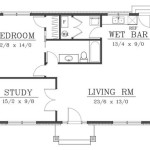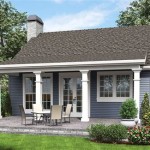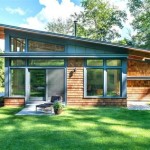2-Story House with Basement Floor Plans: Maximizing Space and Functionality
The design and construction of a 2-story house with a basement is a complex undertaking that requires careful consideration of various factors. These include site conditions, budget constraints, intended use of space, and local building codes. A well-designed floor plan can drastically improve the livability and value of a home. Incorporating a basement into a 2-story house provides an opportunity to significantly expand the usable square footage, catering to diverse needs ranging from recreational spaces to additional living quarters.
A 2-story house offers a clear separation of living spaces, often designating the ground floor for communal activities like cooking, dining, and socializing, while the upper floor is reserved for private areas like bedrooms and bathrooms. The addition of a basement further enhances this functional segregation, allowing for the creation of specialized zones that may not be easily accommodated on the main levels. This article will discuss key considerations when planning the floor plans for a 2-story house with a basement, exploring design options and highlighting the potential benefits of this architectural approach.
Understanding Basement Types and Their Impact on Floor Plans
The characteristics of a basement significantly influence the overall design and functionality of the house. There are primarily three types of basements: full basements, partial basements, and walk-out basements. Each type presents unique considerations when developing the floor plan, affecting natural light, accessibility, and potential uses.
A full basement extends under the entire footprint of the house, providing the most substantial additional square footage. This type of basement is ideal for creating a variety of spaces, such as home theaters, gyms, workshops, or even additional bedrooms and bathrooms. The floor plan must account for access via stairs, which are typically located near the center of the house or integrated into the main entryway. Due to being entirely below ground level, full basements may require careful attention to ventilation and moisture control during the design and construction phases.
A partial basement covers only a portion of the house's footprint. This can be a cost-effective option if the full square footage of a full basement isn't required. The floor plan must carefully integrate the partial basement with the rest of the house, considering access points and the structural support required where the basement ends. This design choice can result in interesting opportunities for creative space utilization, such as using the unexcavated area for storage or creating a raised patio.
A walk-out basement has one or more walls exposed to the exterior, allowing for direct access to the yard. This type of basement typically results from a house being built on a sloping lot. Walk-out basements offer the greatest flexibility in terms of natural light and accessibility, making them suitable for use as living spaces, home offices, or even rental units. The floor plan must integrate the exterior access points seamlessly, considering factors such as landscaping, patio design, and drainage around the exposed walls.
Key Considerations for Designing a Functional Basement Floor Plan
Designing an effective basement floor plan involves carefully considering several factors to ensure the space is functional, comfortable, and compliant with local building codes. These include egress, moisture control, ceiling height, and the placement of utilities.
Egress is a critical safety consideration, referring to the ability to exit the basement in case of an emergency. Building codes typically require at least one egress window in each basement bedroom, and often in other habitable spaces as well. These windows must meet specific size requirements and be easily accessible. The floor plan must incorporate the placement of egress windows strategically, considering their impact on natural light and ventilation. In walk-out basements, a direct exterior door can serve as an additional means of egress.
Moisture control is paramount in basement design. Since basements are located below ground level, they are particularly susceptible to moisture infiltration. The floor plan should incorporate features that mitigate this risk, such as a vapor barrier under the concrete slab, proper exterior drainage, and effective waterproofing of the foundation walls. Consider also the placement of bathrooms and laundry rooms, which are potential sources of humidity; proper ventilation is crucial in these areas. Dehumidifiers may also be necessary to maintain a comfortable humidity level, especially in humid climates.
Ceiling height plays a significant role in the perceived comfort and usability of a basement. Building codes often specify minimum ceiling heights for habitable spaces, typically around seven or eight feet. Lower ceilings can make a space feel cramped and uncomfortable. If possible, excavating deeper to achieve higher ceilings is a worthwhile investment, as it greatly enhances the livability of the basement. The floor plan should clearly indicate ceiling heights throughout the basement, taking into account any obstructions such as ductwork or plumbing.
The placement of utilities, such as the furnace, water heater, and electrical panel, is another important consideration. These utilities typically require dedicated space and adequate ventilation. The floor plan should designate a utility room or area that is easily accessible for maintenance and repairs. Consider noise generated by the furnace or water heater when placing this area in relation to other rooms in the basement. It's also crucial to ensure that utilities are located in an area that is protected from moisture and potential flooding.
Integrating the Basement with the Main Levels of the House
The connection between the basement and the upper levels of the house is crucial for creating a cohesive and functional living space. The location and design of the staircase, as well as the overall flow of traffic between the floors, are key considerations. The staircase should be easily accessible from the main living areas and designed to be safe and comfortable to use.
The staircase design should complement the overall architectural style of the house. A wide, open staircase can create a grand entrance to the basement, while a more discreet staircase may be appropriate for a more informal space. Consider the materials used for the staircase, such as wood, metal, or concrete, and how they integrate with the surrounding finishes. Adequate lighting is essential for safety and should be incorporated into the staircase design.
The floor plan should also consider the flow of traffic between the basement and the main levels of the house. A well-designed floor plan will minimize disruption to the main living areas and provide a clear and logical path to the basement. If the basement is intended for use as a recreational space, consider placing the staircase near the family room or kitchen. If the basement is intended for use as a guest suite, consider placing the staircase near the entryway to provide more privacy.
The basement floor plan should also be coordinated with the floor plans of the upper levels. Consider the placement of load-bearing walls and columns in the basement and how they align with the structure above. It's also important to ensure that plumbing and electrical systems are properly aligned between the floors. A coordinated floor plan will result in a more efficient and cost-effective construction process.
In summary, designing a 2-story house with a basement requires careful planning and consideration of numerous factors. By understanding the different types of basements, addressing key considerations such as egress and moisture control, and integrating the basement seamlessly with the main levels of the house, it is possible to create a functional, comfortable, and valuable living space.

Stylish And Smart 2 Story House Plans With Basements Houseplans Blog Com

Stylish And Smart 2 Story House Plans With Basements Houseplans Blog Com

2 Story House Floor Plans 6 Bedroom Craftsman Home Design With Basement

Stylish And Smart 2 Story House Plans With Basements Houseplans Blog Com

2 Story 4 Bedroom Layout

Modern 2 Story Home Plan With Basement 267002spk Architectural Designs House Plans

4000 Sf Contemporary 2 Story 4 Bedroom House Plans Bath 3 Car Garage Two Open Floor Basement

Stylish And Smart 2 Story House Plans With Basements Houseplans Blog Com

3 7 Bed 2 4 Bath Country House With Basement Option Plan 187 1148

Cottage Style House Plan 2804 Lakeview








